Home » Posts tagged 'research'
Tag Archives: research
John Jay Institute Director Champions Education, Advocacy, and Policy Change for Black Empowerment
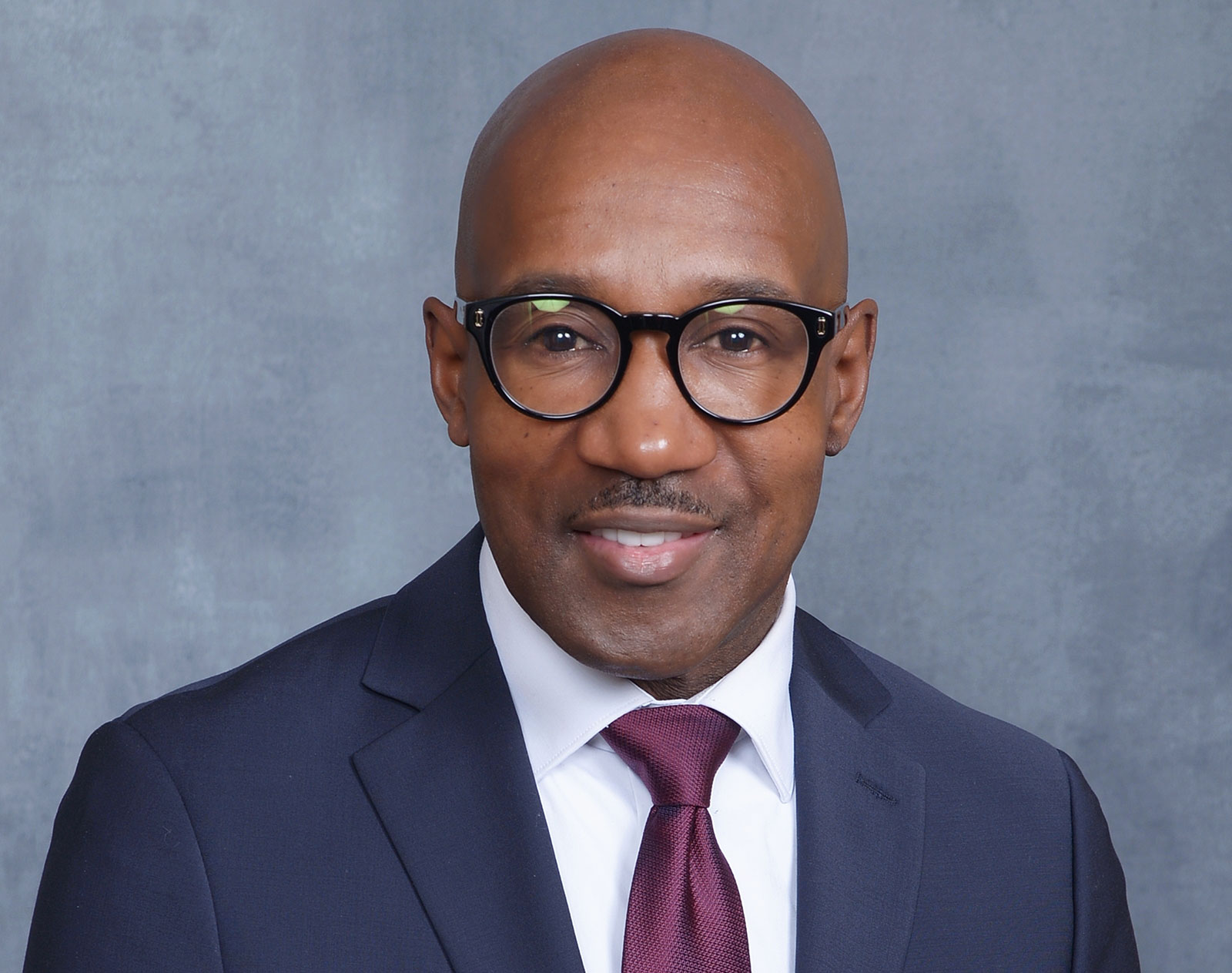
In celebration of Black History Month 2024, Andre Ward, the Executive Director of the John Jay Institute for Justice and Opportunity, reflects on a journey shaped by personal experiences within the criminal legal system. From incarceration to becoming the John Jay Research Center Director, his experiences drive a vision to empower formerly incarcerated individuals through education and to influence policy changes addressing social and racial inequalities. Read more about his background in the Q&A below.
As we celebrate Black History Month, can you share a bit about the journey that led you to John Jay’s Institute for Justice and Opportunity and a professional achievement that you believe has contributed to advancing justice and opportunity for the Black community?
I came to the institute as a result of my past involvement with College Initiative in 2009. I was released from incarceration on January 16, 2009 (the day Martin Luther King Jr’s birthday was observed), and two weeks later, I enrolled in Medgar Evers College. Earning both undergraduate and graduate degrees from CUNY’s Medgar Evers and Herbert H. Lehman Colleges, respectively, created opportunities for me to deepen my commitment to empowering the Black Community. After earning my Master’s Degree in Social Work, I was asked by the department chair at Medgar Evers College to return as an adjunct lecturer, where I taught mostly Black (and Latinx) students for 4 ½ years. Following this professional achievement, I localized myself in non-profit reentry/policy/advocacy work, culminating in a major New York City legislative win with the passage of the Fair Chance for Housing Act in December 2023. This legislation would prevent people with a conviction record from being discriminated against when applying for housing. For many justice-impacted college students like those whom we serve at the Institute for Justice and Opportunity, housing is indispensable to creating stability. This important legislation would protect them and the other 750,000 New Yorkers (80% of whom are Black and Latinx) from being denied access to housing solely on the basis of past justice system involvement.
How has your previous experience prepared you for the role of Research Center Director at the Institute for Justice and Opportunity?
Being directly impacted by the criminal legal system and working with diverse groups and students who had and did not have justice system involvement has prepared me for the role of Research Center Director at the Justice and Opportunity Institute. Additionally, my training as a social worker, policy/legislative change agent, and advocate for justice, fairness, and equity in education, employment, and housing – especially for people with conviction records – has also prepared me for this role. Serving in various capacities in New York City non-profit starting with providing job readiness/career coaching to facilitating academic and life skills workshops for students at Baruch College’s SEEK program and overseeing restorative justice/alternatives to incarceration work for young adults ages, serving as director of workforce development and executive leveled roles in advocacy and education and employment services, has prepared me for this role. My experience of being incarcerated has also served to prepare me for this role.
What is your vision for the Institute in promoting justice and opportunity, particularly within the context of Black communities?
My vision is to expand how we equip formerly incarcerated students with the knowledge and skills necessary for securing gainful employment, an essential factor often impeded by the stigma of a criminal record. Deepening existing stakeholder relationships while simultaneously innovating in areas of program service provision is part of my vision to move toward national and international education efforts.
Given the current social and racial inequalities landscape, how do you see the institute’s role in influencing policy changes that address these disparities?
The institute can support advocacy efforts that address discrimination in education. It can also join voting rights efforts to get our students involved in changing policy/legislation that impacts their lives. Through narrative sharing and engaging elected officials in the city and state, IJO’s students can become empowered to organize their communities to facilitate change. By doing so, members of the community become co-creators of public safety, thus creating the world they want to see and be in.
How do you see the institute actively contributing to the ongoing narrative of Black history and progress?
Education transcends the mere acquisition of knowledge; it serves as a catalyst for personal transformation. For formerly incarcerated individuals, this transformation can be profound. Education instills self-worth, purpose, and a vision for the future, offering a beacon of hope and a pathway to self-improvement. IJO will continue to serve as a place where justice-involved students can come. And through the impact IJO has on students, coupled with students developing an understanding of themselves, they will become assets to the community, creating a history of contribution that adds value to the black community and humanity.
IJO will actively nurture essential life skills, including critical thinking, problem-solving, and decision-making, which can be a powerful tool for psychological healing, helping individuals overcome the stigma and emotional burdens associated with their criminal history.
Western and Redburn (2017) emphasize in their seminal work, Education as Crime Prevention: The Case for Reinvesting in Prison Higher Education, that the role of education is to serve as a platform for self-improvement and a means for shifting individuals’ perspective from their past to their potential. This transformational aspect of education is pivotal in successfully reintegrating formerly incarcerated individuals into society, and IJO will maintain this work – especially during Black History Month.
How are you celebrating Black History Month?
I am celebrating Black History Month by actively making monetary and skills contributions to small Black organizations that support the communities we come from and focus on reentry and higher education services for people with a conviction record. I am also celebrating the amazing good fortune I have to serve our students alongside my deeply committed colleagues at IJO. Together, we are making a difference in the lives of Black people in particular, and humanity generally – one powerful academic student at a time.
Read more about the John Jay Institute for Justice and Opportunity here.
How Black Writers Sought Justice During the Jim Crow Era
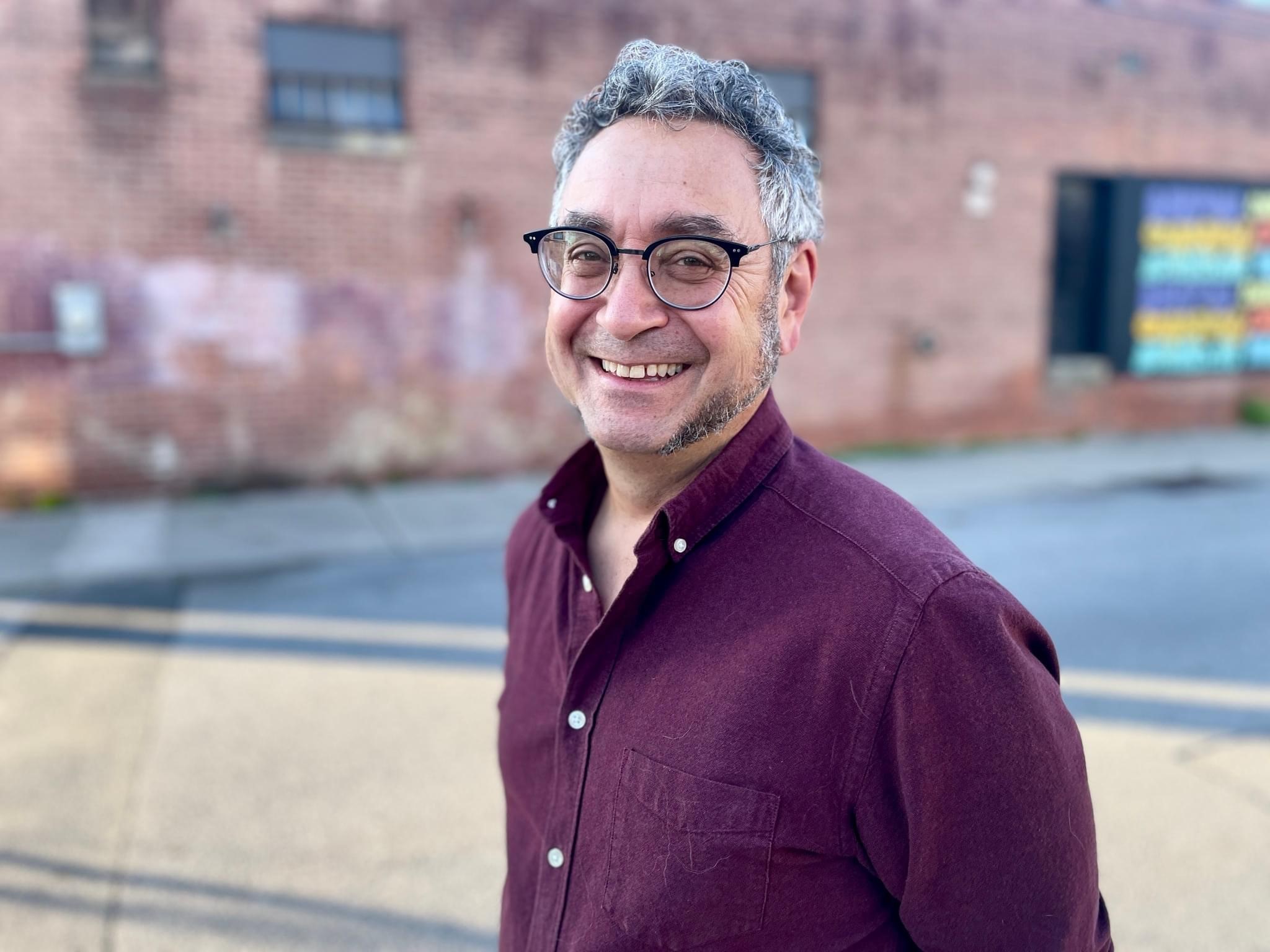
In American media history, the Saturday Evening Post, often celebrated for its nostalgic portrayal of American life, undergoes a critical analysis in the groundbreaking book “Circulating Jim Crow: The Saturday Evening Post and the War Against Black Modernity” by Dr. Adam McKible, associate professor of English at John Jay College. This study challenges the idealized image of the iconic publication, exposing its deep connections to racist ideologies during the Jim Crow era, contrary to the widely held belief that the magazine offered an uncomplicated reflection of American life.
The book begins with Dr. McKible exploring the career of George Horace Lorimer, an editor who propelled the Saturday Evening Post to prominence during the modernist era and established the magazine’s remarkable influence. With a readership in the millions, the magazine played a pivotal role in shaping public opinion and influencing households across the nation. Under Lorimer’s editorship, the magazine fueled anti-immigration sentiments by promoting nativist politics and racial pseudoscience, contributing to policies that closed the nation’s borders to immigrants from diverse regions, including southern and eastern Europe, Africa, Asia, and the Caribbean.
“The magazine under Lorimer was very involved in ginning up anti-immigrant sentiment in America and making Americans suspicious of other Americans based on their racial origin,” said Dr. Mckible in an interview with John Jay Research.
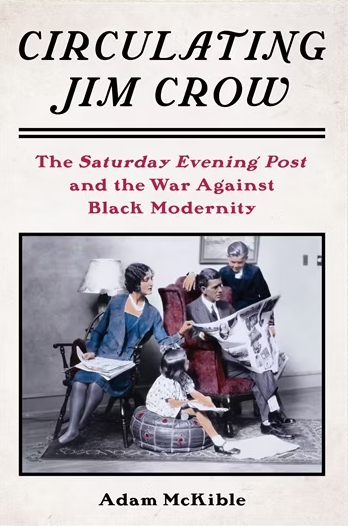 Focusing on the Harlem Renaissance, Dr. McKible’s research also exposes how the Saturday Evening Post portrayed African Americans and responded to changes in Black American life during the Harlem Renaissance. He unveils the magazine’s subtle but insidious approach to addressing the era’s transformations, coining the phrase “register and re-contain” to describe how the magazine acknowledged black achievements only to undermine them through racist stereotyping.
Focusing on the Harlem Renaissance, Dr. McKible’s research also exposes how the Saturday Evening Post portrayed African Americans and responded to changes in Black American life during the Harlem Renaissance. He unveils the magazine’s subtle but insidious approach to addressing the era’s transformations, coining the phrase “register and re-contain” to describe how the magazine acknowledged black achievements only to undermine them through racist stereotyping.
Dr. McKible’s findings reveal that despite recognizing the emergence of black modernity, the magazine consistently endeavored to restrain and belittle black accomplishments, transforming them into subjects of ridicule or disregard. This dismissive approach extended to influential figures such as Booker T. Washington and other black leaders during the Harlem Renaissance, as the Saturday Evening Post downplayed their contributions.
In response, black writers resisted the magazine’s narratives by taking aim at the white writers who were widely recognized as Saturday Evening Post authors. By naming such figures, as famous Post authors as Octavus Roy Cohen and Irvin S. Cobb, Harlem Renaissance writers signaled their displeasure with and resistance to the caricatures and stereotypes perpetuated by Lorimer’s magazine.
“With the help of the Saturday Evening Post, America took on the work of establishing Jim Crow, legally and culturally. These were not legal efforts but instead cultural maneuvers designed to denigrate, demean and dismiss black humanity, to take back everything that happened during Reconstruction and destroy it,” says Dr. Mckible in an interview.
Expanding the history to contemporary implications, Dr. McKible emphasizes the importance of truth-telling, challenging nostalgia, recognizing that America’s history is fraught with complexities, and acknowledging the deep-rooted racial inequalities that persist.
“The contemporary media should always tell the truth,” Dr. Mckible emphasizes.
Dr. McKible’s groundbreaking research redefines our understanding of the Saturday Evening Post and contributes to contemporary discussions about media responsibility, representation, and the ongoing struggle for racial equality.
Read about Dr. McKible’s Research here.
Podcasting at John Jay: Making Research Accessible
If you’re like us, you love podcasts enough that you’ve subscribed to more than you can listen to in a week of subway commutes. Podcasting, then called online radio, rose in popularity with the proliferation of mp3 players in the early 2000s. In tandem with other personal platforms like blogs, podcasts exemplified the “democratizing spirit” of the internet.
Today, they are big business. Since the release of Serial in 2014, podcasts have boomed. Monthly listeners have nearly doubled since 2014, from around 39 million Americans to an estimated 90 million. As the listening audience grows, quality improves, and bigger names get interested in the medium, advertisers are investing millions.
At John Jay, interest in podcasting has risen along with the medium’s growing potential. The college is home to a variety of podcasts, run by students, faculty and staff, on a rainbow of topics. For example, students in the English department work with Professor Christen Madrazo to write, produce, and edit Life Out Loud, which highlights the diverse voices and real stories of John Jay’s student body. We also have faculty working on podcasts hosted outside John Jay, podcasts run by research centers, and faculty and staff who produce their own shows, right here on campus.
We will introduce you to two homegrown John Jay podcasts that seek to translate scholarship into a form that everyone can understand. Meet Kathleen Collins, a Reference Librarian and Professor at John Jay College, and Nick Rodrigo, a CUNY Ph.D. candidate and John Jay College adjunct professor. While Kathleen is on her 38th episode of podcast Indoor Voices, and Nick has just released the first six episodes of They Are Just Deportees, both share the desire to take CUNY research out of the ivory tower and bring it to the community.
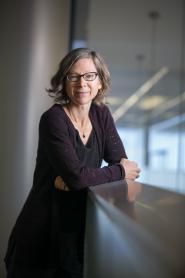 Kathleen Collins has been producing Indoor Voices since the summer of 2017. She started the podcast as “a way to highlight the fascinating things going on around CUNY that might not be widely known. There are so many inhabitants in the CUNYverse doing incredibly interesting things… We like being able to provide a low-stakes, easy-to-share platform for people to talk about their work.”
Kathleen Collins has been producing Indoor Voices since the summer of 2017. She started the podcast as “a way to highlight the fascinating things going on around CUNY that might not be widely known. There are so many inhabitants in the CUNYverse doing incredibly interesting things… We like being able to provide a low-stakes, easy-to-share platform for people to talk about their work.”
To Kathleen, the conversations are the key element. She and her co-host, La Guardia Community College librarian Steven Ovadia, interview CUNY faculty, students, alumni and staff members about their research or creative output; they have a great deal of leeway to highlight what interests them.
 Nick Rodrigo is new to podcasting, overcoming challenges as he meets them in the course of creating They Are Just Deportees. The newly-launched show examines the various ways in which the U.S. immigration enforcement system shapes and controls the lives of migrant communities in this country. With co-host Darializa Avila Chevalier, TAJD helps listeners to understand “the multiple sites of border enforcement in the U.S., and the punitive effects of the country’s periodic moral panics on the ‘criminal alien.'”
Nick Rodrigo is new to podcasting, overcoming challenges as he meets them in the course of creating They Are Just Deportees. The newly-launched show examines the various ways in which the U.S. immigration enforcement system shapes and controls the lives of migrant communities in this country. With co-host Darializa Avila Chevalier, TAJD helps listeners to understand “the multiple sites of border enforcement in the U.S., and the punitive effects of the country’s periodic moral panics on the ‘criminal alien.'”
Nick, and his associates in the Social Anatomy of a Deportation Regime Working Group (the sponsor of the podcast), think this is a particularly relevant topic. “Immigrant rights have come under increasing threat from the state, with bans on immigration from Muslim majority countries, the detention of children at the U.S./Mexico border, and the pledge of this administration to increase the forced removal of all undocumented people. … It is vitally important that the deportation system — which expels up to 300,000 persons a year — be placed in the historical context of this country’s treatment of the ‘other,’ while focusing on the real time implications of the current system on immigrant communities.”
For both showrunners, podcasting is a great way to make sometimes-complex issues and scholarship more accessible to an average listener. Says Nick, “two of the major issues in scholarship today are the ‘ivory tower’ mentality of academics and a lack of interdisciplinary focus on major social issues. Conferences and public lectures can be delivered in such inaccessible language that they can be alienating to non-academics. Podcasting allows for the complex issues concerning immigration enforcement to be distilled and presented to the public in a way that is accessible and digestible, with the opportunity for the listener to pause, reflect, and reengage at their own pace. Podcasting also provides a platform for criminologists, sociologists, public health experts, geographers, and journalists to come together on an issue and, if the interview structure is good, a compelling narrative for change can be constructed.”

Kathleen also wants to make it easier for non-experts to engage with what CUNY produces. “There is so much going on within CUNY,” she says, “and it shouldn’t be hidden inside the academy. Podcasts are a good way to get people interested in new things — it’s a mini, portable seminar for your ears. But since Steve and I act as generalists in our role as interviewers, we can hopefully elicit a layman’s interpretation of what scholars are thinking and writing about. The point is to bring attention to the author or artist, and ask about their research and writing process and teaching — these topics bring the conversation to a universal level.”
Creating content to fit the platform can sometimes be challenging. Nick was “forced to learn new skills on the job,” but found that his struggles with editing gradually turned into confidence! Kathleen cites the extensive support and inspiration from other podcasters and staff at the college as a source of her success and joy in creating Indoor Voices.
In the end, she says she loves every episode she produces — thanks to the satisfying conversations and intimate connections she can form with guests during a 40 minute interview, each new episode supplants the last as her new favorite.
Check out the latest episodes of Indoor Voices, They Are Just Deportees, and more John Jay podcasts:
- Indoor Voices: J Journal founders Adam Berlin and Jeffrey Heiman have been producing the literary magazine for twelve years. The high quality creative work they feature deals with contemporary justice issues, but not always in a way you might expect.
- They Are Just Deportees: You can find the first six episodes on the Social Anatomy of a Deportation Regime website, or by searching on Spotify.
- Reentry Radio: The latest episode of the podcast produced by John Jay’s Prisoner Reentry Institute deals with employment discrimination against justice-involved individuals, with special guest Melissa Ader of the Legal Aid Society’s Worker Justice Project.
- This World of Humans: Host Nathan Lents talks to Hunter College researcher Dr. Jill Bargonetti about using mouse models to study triple-negative breast cancer.
Policies Changing New York: Impact Magazine 2018-19
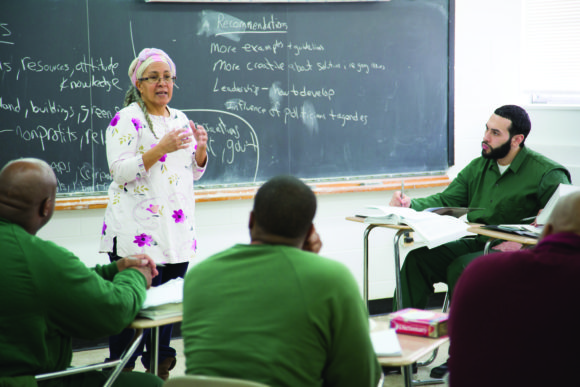
As a New York institution and part of the City University of New York, John Jay College is home to many who want to drive real-world reform to make New York communities stronger. Our unique research centers provide evidence-based partnerships and guidance that city officials and state legislators need to create better policy. Read on for a quick look at the impactful work they are doing in New York, or read the full story in our latest issue of Impact research magazine.
Easing Reentry
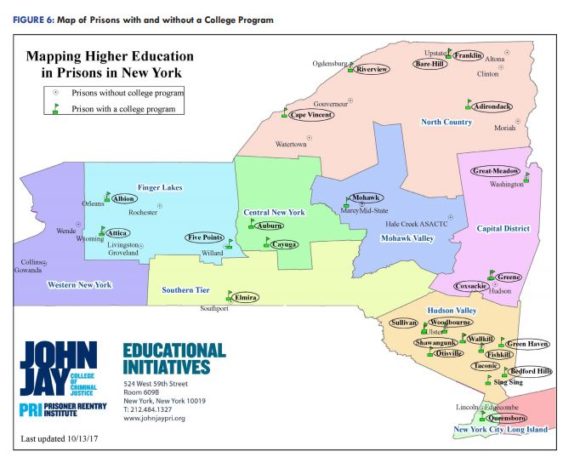
The Prisoner Reentry Institute has been a research center since 2005, when it was founded to help people live successfully in their communities after contact with the criminal justice system. The center, directed by Ann Jacobs, engages in a combination of public advocacy, direct service, and collaborative partnerships to promote a range of reentry practices, with a focus on creating pathways from justice involvement to education and career advancement.
In pursuit of that goal, PRI advocates for higher education in prisons, priming what they call the “prison-to-college pipeline.” They recently produced a report mapping higher education opportunities in New York State prisons, finding that only 3% of more than 45,000 people in New York prisons were participating in higher education programs, despite expanded funding.
PRI is also interested in post-incarceration advocacy. A work group, led by PRI’s Director of Public Policy Alison Wilkey and comprised of local stakeholders, is working to change the New York City Housing Authority’s policies excluding residents who have been arrested. The work group’s actions, including the creation of a clearer exemption application, new guidelines limiting the use of exclusions, and tenant education, have helped reduce the number of people excluded from NYCHA housing 50% from 2016 to 2018.
Interrupting Crime
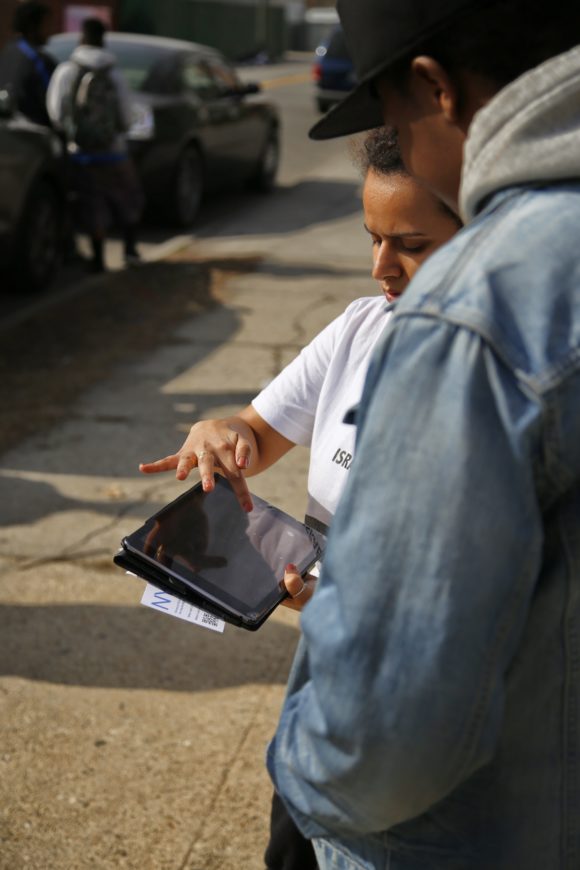
A team of Research and Evaluation Center researchers is evaluating Cure Violence, a public health approach to violence reduction.The program relies on neighborhood-based workers, often with a history of justice involvement, mediating and working with younger people in the neighborhood to keep them from going down a violent path.
“Politically, it’s a difficult program to operate,” says REC Director Jeff Butts, because city officials are often wary of Cure Violence workers’ criminal histories. But REC has found that Cure Violence sites in the South Bronx and Brooklyn have seen greater violence reductions than comparison sites. According to Butts, explaining the research and the results clearly to the public is key to shifting policy. “You can’t change policy, no matter how smart you are, just by publishing articles in academic journals.”
Less Punishment, Less Crime
Violence isn’t the only type of crime that can be reduced with less punitive solutions. Director of research project From Punishment to Public Health (P2PH) Jeff Coots holds that alternatives to incarceration can not only reduce the use of prison and jail terms, but also offer rehabilitative services to people in need. “Punishment alone is not getting us the public safety outcomes we want,” he says. “How do we identify public health-style solutions that can respond where punishment does not, and isolation will not?”
Among P2PH’s signature initiatives is a pilot project to use pre-arrest diversion for minor offenses committed by the homeless. Many of those cases were previously decided at arraignment, denying arrestees the chance to connect with needed services. The pilot has reduced the number of people arrested and increased the number connected with services like transitional housing and health treatment.
In general, Coots believes policymakers are increasingly open to health interventions as an alternative to incarceration. “We don’t want the jail to be the biggest mental health provider in our community.”
Justice by the Numbers
The Data Collaborative for Justice is invested in documenting the scale of the criminal justice footprint, in New York and a network of other cities, and

considering solutions to reduce it. DCJ explores high-contact points in the system, including pretrial detention and incarceration in New York City jails. A major project for the center has been to produce an evaluation of the 2016 Criminal Justice Reform Act, passed by the New York City Council to “create more proportional penalties for certain low-level, nonviolent offenses.” With support from the Mayor’s Office of Criminal Justice, DCJ’s evaluation shows that the CJRA seems to be achieving its aims — 90% of summonses for five high-volume offenses like noise violations and littering are now civil rather than criminal, with an associated decline in criminal warrants.
The positive impact of this legislation has the potential to push policy change in other areas by informing conversations with lawmakers. DCJ works closely with city and state agencies to gather data and make it available to policymakers so they have the resources to make evidence-based decisions. “Policy neutrality is an important part of DCJ’s mission and outlook,” says Project Director Kerry Mulligan. “That has allowed us to be a trusted broker with a diverse set of data partners.”
Among John Jay College’s research centers and projects, some researchers are building the evidence base, while others are rolling up their sleeves to help cities implement and evaluate solutions on the ground. In each case, the vital goal is making communities safer. Says REC’s Jeff Butts, “You have to put the evidence in front of [policymakers] on a regular basis in order to get the political culture to start to shift.”
For the full feature, please visit the John Jay Faculty and Staff Research page to read the whole magazine in PDF form!
A Legacy of Violence: Impact Magazine 2018-19
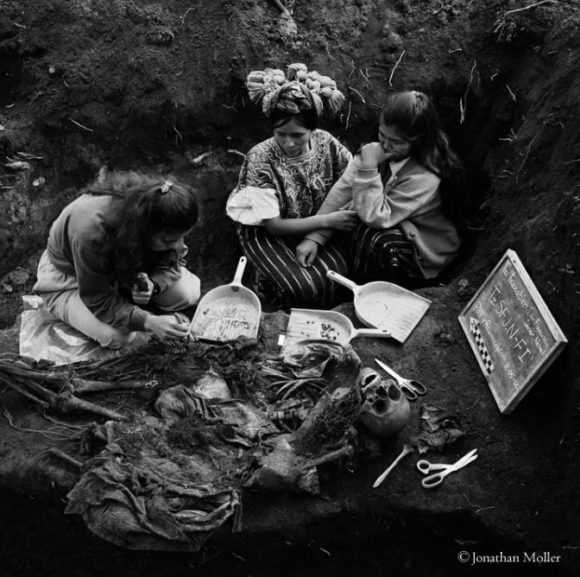
In American politics, issues like immigration and the refugee crisis generate national headlines daily. But the complex dynamics of immigration are inextricably tied to U.S. history in the Americas, where a legacy of colonialism continues to define the relationship between the United States and the nations of Central and South America.
More than 50 years of interventions in Guatemala, Honduras, El Salvador, Panama, Chile, Brazil and other countries in the southern hemisphere have affected the lives of these countries’ residents in various ways. Many have resulted over the long term in the systematic destabilization of government coupled with a legacy of violence and military dictatorship, contributing to the reasons that immigrants may cite for wanting or needing to leave their homelands: gang violence, repression, dictatorship and more.
Several professors and students at John Jay have made it their life’s work to investigate the causes and ramifications of this instability, among them José Luis Morín, Claudia Calirman, Pamela Ruiz, and Marcia Esparza. We profiled these scholars in our latest issue of Impact magazine. Read on for a summary of our Impact feature story.
Suing for Justice
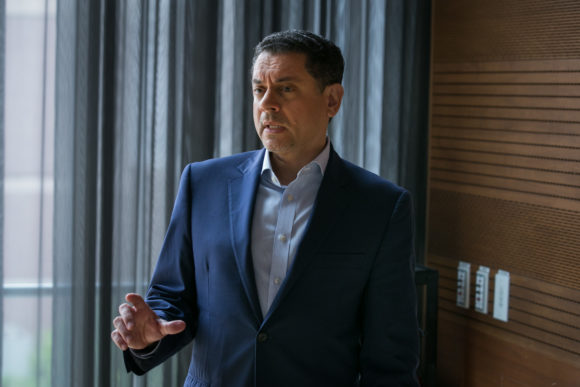 José Luis Morín, Chair of John Jay’s Latin American and Latinx Studies Department, is deeply involved with the process of finding justice for the victims of the American 1989 invasion of Panama. Morín had been in the thick of the invasion, which he recalls as “literally a war zone,” and subsequently filed a lawsuit on behalf of individuals who had been directly harmed, seeking reparations from the United States.
José Luis Morín, Chair of John Jay’s Latin American and Latinx Studies Department, is deeply involved with the process of finding justice for the victims of the American 1989 invasion of Panama. Morín had been in the thick of the invasion, which he recalls as “literally a war zone,” and subsequently filed a lawsuit on behalf of individuals who had been directly harmed, seeking reparations from the United States.
Nearly 30 years later, in December 2018, the Inter-American Commission on Human Rights finally issued a decision in the case, holding the U.S. government solely responsible for the deaths of Panamanian citizens during the invasion; it is responsible for compensating the victims for damages.
Finally having a decision saying that the U.S. had violated human rights through its actions was a key step toward justice. Morín returned to Panama following the decision, going to communities to explain what this meant and speak to the individuals and families who were part of the case.
“What makes this particularly relevant, and so critical to the work we do in this department, is having our students learn about the history of Latin America and how the U.S. played such an integral role in how these countries developed,” said Morín.
Art Under Fire
The U.S. justified its intervention in Panama as a defense of democracy, but some U.S.-backed “democratic” leaders have turned out to be authoritarian dictators. This was the case in Brazil, where a right-wing authoritarian government ruled from 1964 to 1985.
 Claudia Calirman, Associate Professor of Art & Music, is an expert on artistic resistance to government repression in Brazil, and her research — including her first book, Brazilian Art Under Dictatorship — explores how art was expressed in mediums designed to thwart detection. These mediums include body art and what was called “ready mades,” which are every day objects modified to carry subversive or critical messages that could be circulated publicly without implicating the artist.
Claudia Calirman, Associate Professor of Art & Music, is an expert on artistic resistance to government repression in Brazil, and her research — including her first book, Brazilian Art Under Dictatorship — explores how art was expressed in mediums designed to thwart detection. These mediums include body art and what was called “ready mades,” which are every day objects modified to carry subversive or critical messages that could be circulated publicly without implicating the artist.
Calirman’s ongoing work explores different facets of Brazilian art over a variety of time periods, showcasing the ways Brazilian artists approach tough issues and combat repression. Her forthcoming book deals with Brazilian women’s struggles with the term “feminism” as it has applied to their work since the 1960s and ’70s. And Calirman is working on curating a Spring 2020 exhibit at John Jay’s Shiva Gallery about ongoing censorship of art in Brazil.
periods, showcasing the ways Brazilian artists approach tough issues and combat repression. Her forthcoming book deals with Brazilian women’s struggles with the term “feminism” as it has applied to their work since the 1960s and ’70s. And Calirman is working on curating a Spring 2020 exhibit at John Jay’s Shiva Gallery about ongoing censorship of art in Brazil.
Uncovering Violence
Pamela Ruiz is a recent graduate of the CUNY Criminal  Justice doctoral program whose dissertation analyzed the evolution of gang violence in the Northern Triangle of Guatemala, Honduras and El Salvador. An explosion of gang violence in these Central American countries is connected to instability and the destabilization of democratic governments.
Justice doctoral program whose dissertation analyzed the evolution of gang violence in the Northern Triangle of Guatemala, Honduras and El Salvador. An explosion of gang violence in these Central American countries is connected to instability and the destabilization of democratic governments.
Ruiz aimed to classify violence that is truly gang-associated, to dispel myths around violence and better target enforcement. “The perception is that all this violence is attributed to gangs,” she explained, ‘but when you go into a country and interview people, you discover that it’s different groups contributing to violence in different areas.”
Her quantitative methods are filling a key gap in research in the region, providing reliable data that policymakers can use to reduce violence, target corruption, and more.
Documenting Dictatorship
Marcia Esparza, Associate Professor of Sociology and an expert on genocide, state crimes, and human rights violations, would argue that, wherever violence and repression are to be found, remembering victims and commemorating resistance is vital in learning from the past and addressing present violence and corruption.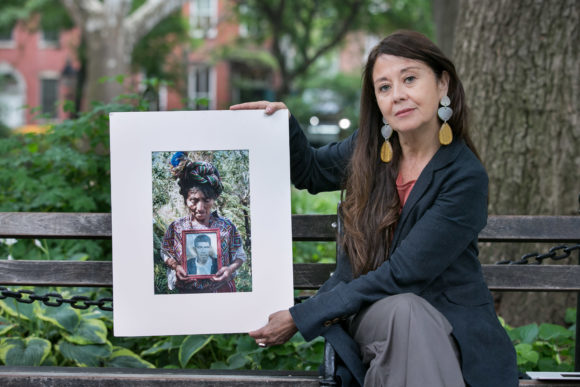
“If we don’t look at the long-term footprints of militarization on the local level, we cannot talk about democracy or democratic institutions,” she says. Esparza was inspired by her work interviewing genocide survivors in Guatemala to found the Historical Memory Project, which archives and draws on primary sources to memorialize the victims of genocide and state violence, and those who resisted it.
She also emphasizes the importance of helping John Jay students connect with their histories as part of a diaspora. Esparza’s students play a key role in the project’s efforts, as they organize and sort through the large archive to pull together educational exhibitions.
Shared History
The shared history of interventionist foreign policy and authoritarian rule has created a spider’s web of mutual entanglements that continue to tie the United States to its southern neighbors to this day. This long-term history of invasion and intervention by the United States has created patterns and threads that John Jay scholars trace in their efforts to understand, alleviate, and memorialize violence and instability in these countries, in order to achieve justice, create a lasting peace and, in the process, help some Latinx John Jay students better understand their own histories.
For the full feature, please visit the John Jay Faculty and Staff Research page to read the whole magazine in PDF form!
Denise Thompson is Trying to Make Post-Disaster Rebuilding Better
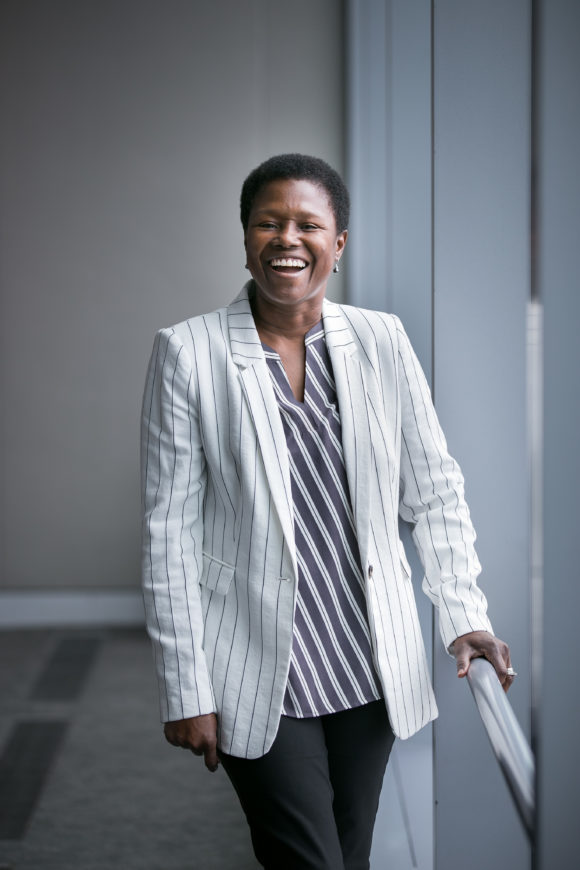 Denise Thompson is an Associate Professor in John Jay College’s Department of Public Management, and an expert on disaster management and risk reduction. Her new book, Disaster Risk Governance: Four Cases from Developing Countries, was published in July 2019 by Routledge. To learn more about where and how she does this work, you can read a profile of Dr. Thompson in this year’s Impact magazine.
Denise Thompson is an Associate Professor in John Jay College’s Department of Public Management, and an expert on disaster management and risk reduction. Her new book, Disaster Risk Governance: Four Cases from Developing Countries, was published in July 2019 by Routledge. To learn more about where and how she does this work, you can read a profile of Dr. Thompson in this year’s Impact magazine.
Read on for an edited interview with Dr. Thompson about her work related to disaster planning and recovery, and how she approached writing a book on such a complex topic:
What factors are most important to consider when planning for storms or natural disasters, whether far in the future or imminent?
Maybe the best way to answer that is to look at the disaster cycle. Mitigation, planning preparedness, response, recovery, reconstruction, and then back to mitigation. Even though I put the phases into discrete components, the cycle is integrated, not discrete. And the steps must always be revised.
Mitigation is essentially putting structural and non-structural elements in place well ahead of a storm. That includes hardening infrastructure as well as putting systems in place to make sure we can respond.
The preparedness phase gets ready for imminent disaster, including by bringing together supplies, people and other resources to respond, and making sure supplies are prepositioned where they’re expected to be needed; organizing transportation and marking routes for evacuation; and more.
Recovery includes the immediate response post-disaster, where communities plan for building or rebuilding; get schools, offices, child care and other systems back up that are required for day-to-day functioning; and bring critical services back on line, like roads, food supplies, water, and the government.
Finally, reconstruction is a process of longer-term rebuilding. Ideally, this includes innovation to ensure communities are “building back better,” and is an extremely integrated, wide-spectrum process that moves toward hardened infrastructure and sustainable processes. This happens after an assessment is done of the damage, and must be integrated into planning.
One example is in the Bahamas. Because they are unable to rebuild exactly the same as before the storm hit, the government is thinking about putting some infrastructure underground, like communication towers, to create some protection from the next storm.
How do you factor in climate change when considering ongoing efforts to prepare for and recover from natural disasters?
Well, what is a disaster? We have to think about that. I was listening to a story on NPR, the bird population of the U.S. shrank by one billion birds – that’s climate change. And even epidemics. Certain bacteria and invasive species thrive in certain temperatures. So it’s a disruption, not only of the human ecosystem, but also of the animal ecosystem.
When we talk about disasters, we tend to talk about natural disasters, but it’s so much bigger. We’re not even talking about man-made disasters, like terrorism or cyberattacks, which could be catastrophic. Those are disasters, too, but man-made.
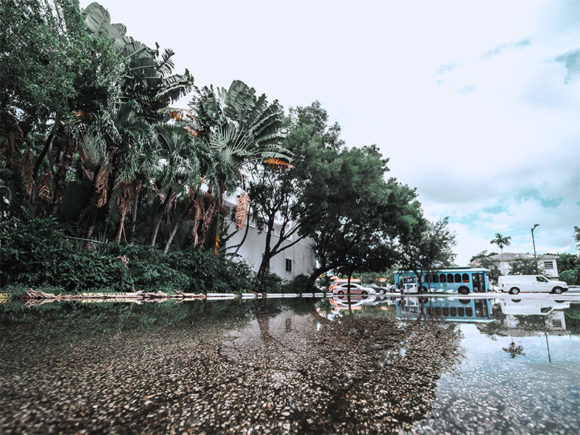
Given the trends in natural disasters associated with climate change (e.g., hurricanes and tropical storms are more frequent, and more frequently of record intensity levels), are there places that are becoming unlivable, or that should be abandoned?
Yes, there are places that should be abandoned. A lot of these countries, their populations are concentrated along the coast, and there are vulnerabilities. Like schools that are flooded in every single storm of course should not have been built where they are.
Are issues of rebuilding and relocation tied in with race and class?
These issues are very tied to rebuilding in many places. You can also look at a place like Flint – race, class and vulnerability are interlinked. Or Newark. Usually, African Americans, Latinos and other minorities are more vulnerable to these disasters. And it’s harder for the poorest communities to recover – the same event has a more drastic impact. The rich have more resources.
In island states, the line is more blurred. The interiors are more rugged, which means most people tend to locate along the coastline, so it’s not as clear-cut an issue as in, say, Hurricane Katrina. But there’s an issue of moral hazard; even knowing that it’s dangerous, people build anyway, knowing that somebody will help them to rebuild. Like the government, or insurance money. So people tend not to bother to plan for disasters.
However, organizations have been exploring insurance, like livelihood protection, for poorer people. For example, the Caribbean Catastrophic Risk Insurance Facility (CCRIF) pools resources from many countries in the region, who pay into this fund. They are disbursed to governments directly, to help pay for rebuilding. Commercial facilities might be getting out of disaster insurance, but others are stepping into that void.
Is there an ideal balance between recovery efforts provided by home governments versus outside aid?
I don’t know if there’s an ideal balance. Governments operate at different levels – national, regional, local, community, household – so we usually say that the government closest to the people should be equipped to help them. But what we find is that often the governments closest to the people are themselves incapacitated by whatever event took place, and they’re not able to help. And if you go one level higher, they may be able to help in some ways but not others, and so on. In cases like those, outside help is needed; the quantity depends on the issue.
Is there a useful role for individual aid?
There’s a useful role, but it’s hard to manage spontaneous volunteers. They may put themselves in harm’s way. Typically we say, go through an entity to help. Most agencies right now want money, because they can best divert it to where it’s needed. That may be potable water, or a sanitary facility, or helping women or children get out of situations where they’re more vulnerable thanks to the disaster. It may be a number of things.
When you talk about disaster planning, mitigation, risk reduction, it’s a big, involved process, and very complex. It’s hard to get a handle on it, but agencies do it. Their effectiveness depends on resources. And no one place has the level of resources needed. That’s why governance systems are important, to bring all these things together – the resources, money, people, institutions, laws, and the formal and informal arrangements that must be made to keep people safe.
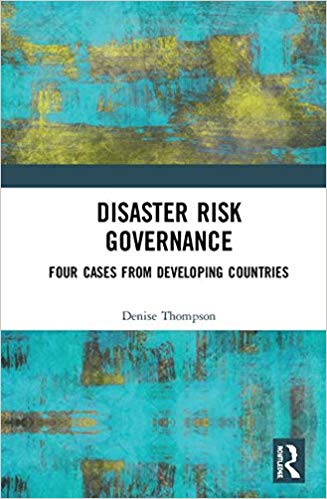 This is obviously a vastly complex topic that touches on every area you can imagine. How do you write a book about that? Is your book more broad, or is it more of a tool?
This is obviously a vastly complex topic that touches on every area you can imagine. How do you write a book about that? Is your book more broad, or is it more of a tool?
The idea for the book came when I was doing a lot of work in the Caribbean and seeing a lot of money being spent, with a minimal return on investment. When the next event came, we were still dealing with the same issues. Activities were happening piecemeal, done by aid agencies, governments, the UN. And preexisting factors, like colonialism, undermined institutions. These were antecedents to what we’re seeing now, but we never could put them together, because we’re always trying to put out fires.
Disaster management systems happen in context of the country, and I realized that countries with weaker governance systems also have weaker disaster management systems. Governance is an umbrella term, comprising all the institutions, systems, actors and processes that come together around disasters.
So what I wanted to do was come up with a number of variables we could use to pinpoint areas we could shore up to improve disaster risk reduction and outcomes. I looked at institutions as a key component in that, like legislation, insurance, security. I also talked about labor policy, networks, economic investment – all these things may not be part of disaster policy, but they support it.
Why did you pick those four specific countries – two in the Caribbean, two in Sub-Saharan Africa – to feature in your book? Did you find some similarities there?
When I came into academia in 2008, there wasn’t much literature on poor countries. And that is not specific to disaster management. The voice was missing. I thought, if I looked at the sub-Sahara and the Caribbean, I would be better able to come up with a governance framework that actually works for developing or poorer countries.
The similarities I picked up are mostly in the institutional and informal aspects. For instance, indigenous peoples from the Caribbean and from Africa were similar in that they had communities with their own laws and customs that may be opposed to planning around disasters. Also, these countries have a legacy of corruption – not all poor countries, some rich countries have higher rates of corruption – but still, government ineffectiveness, government inaccessibility to their populations, these things were comparable. Those cause inefficiencies and waste in the system, they cause people to take longer to recover from disasters. It’s complex and messy.
In the book you have to try to manage the multiple components; you can’t write on everything but you can pick out the salient things. I hope that’s what I was able to do.
Is it disheartening, to see inefficiencies and to see problems getting larger every year, problems that we’ve caused ourselves and failed to find effective solutions to thus far?
Yes, but at the same time, we’re working more closely with communities, and households and individuals, and I think that’s where it has to happen. So while governments create the policies, the infrastructure and the systems, the ecosystem is bigger, with subsystems within it. If you work at the micro level, you can shore up the entire system.
In the Caribbean and in Africa, there are regional agencies that are the real workhorses and innovators – the East African Commission, the African Union, Caribbean Disaster and Emergency Management System, CARICOM. CCRIF, for example, is one of the first in the world to push for countries to pool their resources. Other regions, like Southeast Asia, are doing a similar thing. All of these groups come together to actually build and pilot things.
Research Productivity 2018: A Thread
In June 2019, OAR shared a few of our 2018 most productive scholars with our Twitter followers. Check out the whole thread below, and don’t forget to follow @JohnJayResearch and the researchers mentioned below to get more information in real time!
Last year we recorded more than 700 journal articles and book chapters published by @JohnJayCollege faculty members! While we finish adding up this year’s #JJCResearch productivity, we want to introduce you to some of our most productive #JJCFaculty scholars
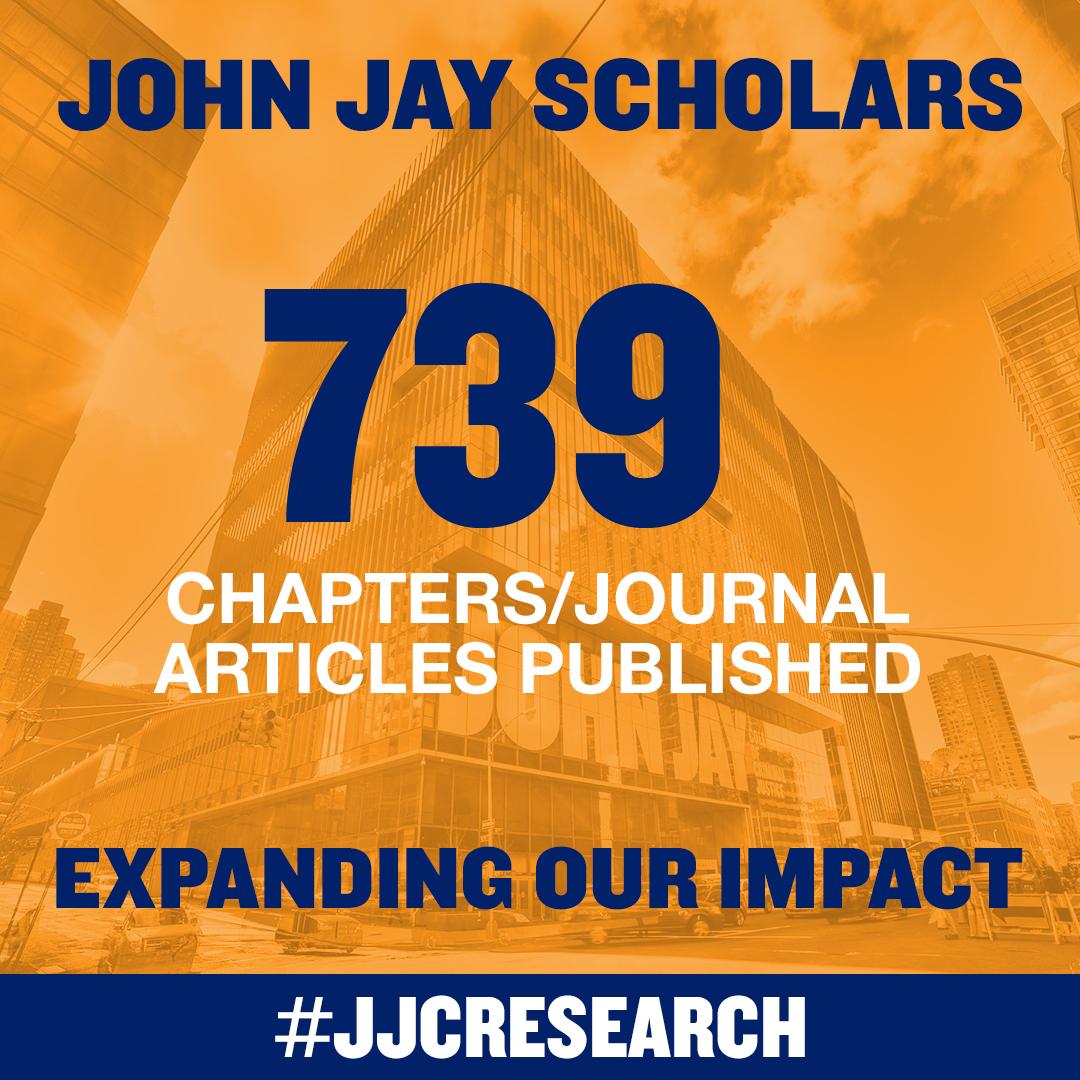
First up is @ktwolff11, who also won the 2019 Scholarly Excellence Award and the Donal EJ MacNamara Award for significant scholarly contributions to #criminaljustice! His most recently published article examines patterns of recidivism after a sex offense, find it here: (bit.ly/2XaqWmw)

Next is @kevinnadal, @JohnJayCollege professor of psychology and the author/editor of two books in 2018! His research explores the impacts of microaggressions on the mental health of marginalized groups including people of color, women, LGBTQ individuals, & more. #JJCResearch
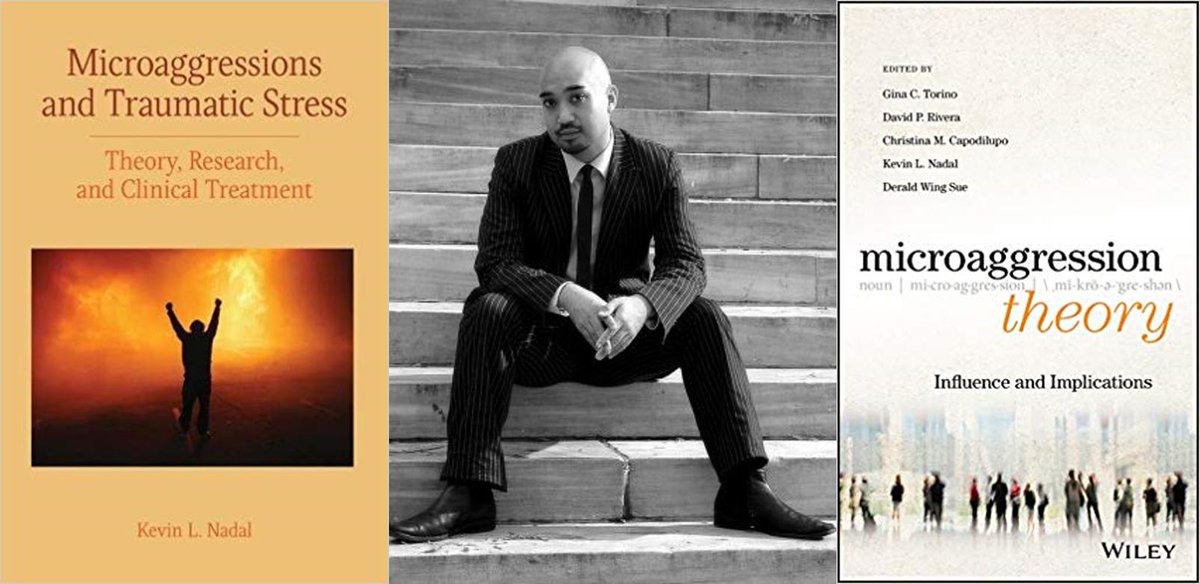
Today’s ft. #JJCFaculty scholar is @ElizabethJeglic, who published 2 books, 9 peer-reviewed articles, 6 book chapters, and 7 online articles and blogs last year!! Her research focuses on sexual violence prevention — her latest article is in journal ‘Sexual Abuse’ #JJCResearch
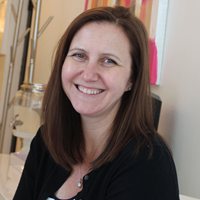
Next up is @JohnJayCollege criminal justice prof @PizaEric. Not only is he often featured by the media as an expert on policing matters, but he published 13 journal articles in 2018 on the data behind risk-based policing, CCTV, and more! #JJCResearch
Do you know @JohnJayCollege poli sci prof Samantha Majic? An OAR #BookTalk alum (), last year she published new book “Youth Who Trade Sex in the U.S.” and has been speaking and writing about the harms of & issues surrounding sex trafficking. #JJCResearch
You can watch her 2014 book talk here: (bit.ly/2KAdH8P)

Last year, @DrMazzula, who is the founder of the @LatinaRAS as well as a @JohnJayCollege prof, kept busy writing and presenting about two key issues: microaggressions, and gender/minority representation in academia. #thisiswhataprofessorlookslike #JJCResearch
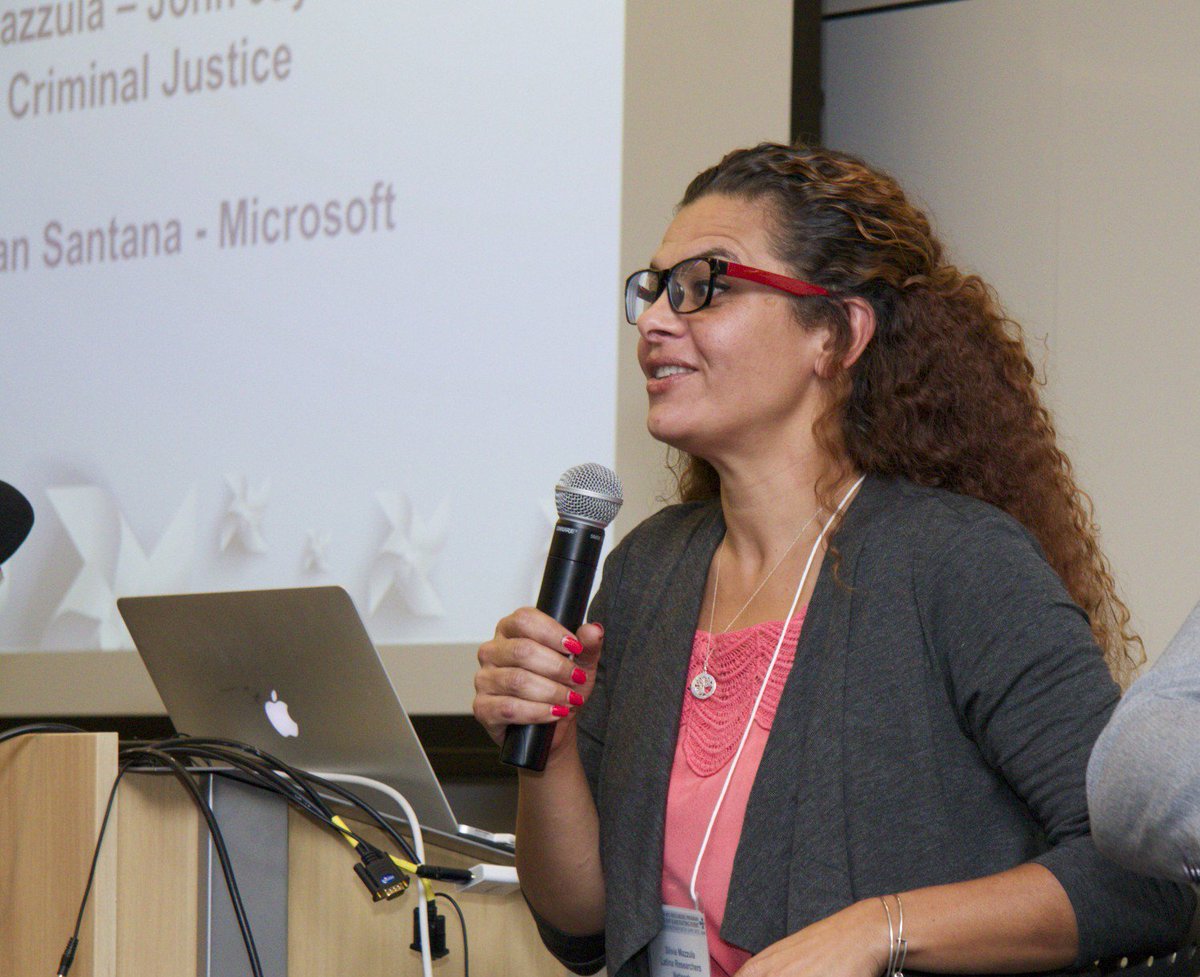
And don’t forget Philip Yanos, who in 2018 not only published his book ‘Written Off,’ but also a monthly column in @PsychToday by the same name. His articles, on stigma attached to mental illness, were cited more than 700 times last year!
#JJCResearch
Find his blog here: (bit.ly/2IQ2w9J)
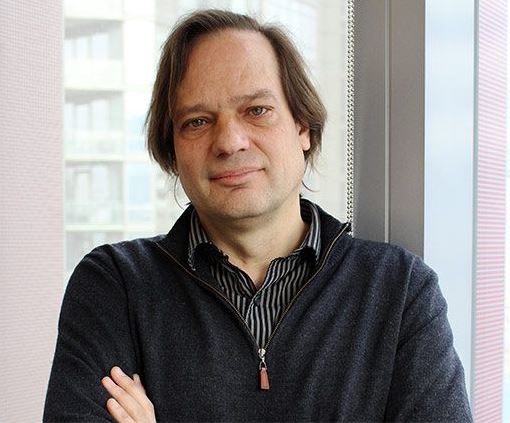
And last but not least, @JohnJayCollege is home to some great podcasts. Check out @indoorvoicespod, @TWOH_VL, @NewBooksPoliSci, @QualityPolicing, @JohnJayTLC on Teaching and Learning, and @lavueltablog. So much to learn about!
John Jay Featured Grant – Reducing Prison Overcrowding: Jeff Mellow + Deborah Koetzle
John Jay faculty and staff came together for a reception on May 14th to honor 76 of their own who received major and external grants and awards in 2018. The funded projects are a testament to the hard work John Jay’s community devotes to research and to honorees’ dedication to studies and creative work that strengthen the scholarly fabric of the institution. The awards funded projects of all types, from those with potential therapeutic implications to those that could change international policy, and more.
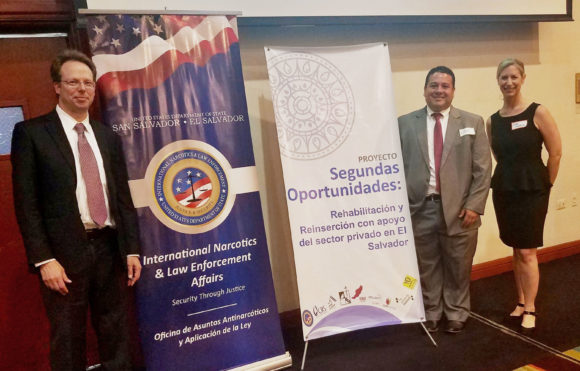
Among the honorees were Dr. Jeff Mellow and Dr. Deborah Koetzle. Their grant, from the U.S. Department of State’s Bureau of International Narcotics and Law Enforcement Affairs, took them to El Salvador to work on alleviating the severely overcrowded conditions in many Salvadoran prisons.
Both Dr. Mellow and Dr. Koetzle have been working to apply evidence-based, empirically-verified practices to corrections for many years, so when the opportunity came to apply their knowledge gained from research in the United States to an international setting, they knew they had to take it. The project took place in cooperation with El Salvador’s National Criminological Council and Director of the General Office of Penal Centers.
Prison overcrowding
El Salvador’s rate of incarceration is among the highest in the world — second only to the United States, with more than 600 out of every 100,000 persons incarcerated. Although the overcrowding rate is slowly coming down thanks to the construction of new prison facilities, the researchers described unhealthy conditions in some prisons. Some facilities were at 800 or 900 percent capacity, with bunks overfilled with bodies, increased risk of infectious disease, and insufficient room for programming or recreation.
Dr. Koetzle described the severely overcrowded prisons as “strangely quiet” and very still, as inmates have little room for movement. “No one should have to live in those types of conditions,” said Koetzle. “But the other side of that is really seeing the government and the system putting forward meaningful, genuine efforts to address it.”
Releasing the bottleneck
The counterpart to overcrowded higher security institutions are the granjas, or minimum security prisons, to which incarcerated individuals can transition as part of their rehabilitative journey toward release. Their gradual reintegration and movement through the system requires a protracted process of repeated assessments. “Inmates have to both finish a minimum of a third of their sentence, and also engage in very extensive programming to move from closed prisons to open prisons,” said Mellow. “But the problem is there’s a bottleneck, and only about 6% of the inmates, out of 40,000, are in the open prisons.”
As part of the government’s effort to ameliorate prison conditions and move people through the system more quickly, the researchers were engaged to hire, train and manage criminological teams — composed of one lawyer, one educator, one psychologist and one social worker — that helped to build capacity to assess inmate progress toward rehabilitation while drafting more than 2,000 proposals to improve the process based on empirical data collected throughout.
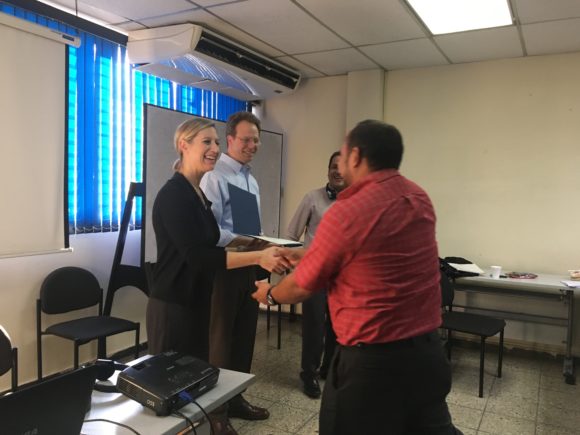 “Our goal was to improve the correctional system and policies, to maintain our relationships down there, and help [the government] to introduce additional evidence-based practice and risk assessments that we think can really help them open up bottlenecks and be more efficient and effective in identifying low-risk individuals to move them through the rehabilitative phases,” said Mellow.
“Our goal was to improve the correctional system and policies, to maintain our relationships down there, and help [the government] to introduce additional evidence-based practice and risk assessments that we think can really help them open up bottlenecks and be more efficient and effective in identifying low-risk individuals to move them through the rehabilitative phases,” said Mellow.
They brought to the process many collective years of experience in working to introduce standardized, evidence-based practice to the U.S. correctional system. Both professors also brought back lessons learned from their time in El Salvador that could translate to better practice in the United States, emphasizing the ways Salvadorans involved in the justice system are still encouraged to feel a part of their community on the outside. “They have families much more engaged, and they are really trying to provide for employment opportunities,” remarked Koetzle. “I think on those two fronts in particular, we could learn.”
Mellow also outlined elements of the rehabilitation program, broadly called “Yo Cambio,” that he felt were exceptional, including “conjugal visits, which we rarely do in the United States, and focus on vocational education. They also have a Fair Day where inmates will go out to sell all the wares they’ve made inside the prison, and the national Olympic game day. You can see that they are really trying to show that inmates are part of the community. They’re people.”
The life of a PI
Working on a large international grant was both a challenge and a source of immense satisfaction. “You’re wearing 100 different hats,” said Mellow, who was Primary Investigator on the grant. “Everything from drafting subcontracts to thinking about lunch for the trainings, to dealing with messages every day, getting everybody paid, and dealing with the funder. Plus doing the actual work, and writing the quarterly and final reports and analyzing the evaluation. If you think about it, you’re managing 40-something people.”
It was “not typical to have so many staff in institutions for this length of time,” added Koetzle, the project’s Senior Advisor. “[And] engaging in international work stretches you a little bit differently.” They took seven trips to El Salvador during the two-plus years of their grant work, and talked about the greater investment of resources, time and flexibility needed to pull off a successful overseas project.But the challenges created by managing a large grant from so far away were paired with a huge pay-off. Both Mellow and Koetzle agreed this was one of the most rewarding projects they’d ever undertaken, and talked about the valuable insights they had learned from working in a different context and system. They also had only positive things to say about their team of local staff, both about their capabilities and their constant enthusiasm and dedication.
“That’s something that really stood out — the number of times they thanked us for giving them the opportunity to help their country,” said Koetzle.
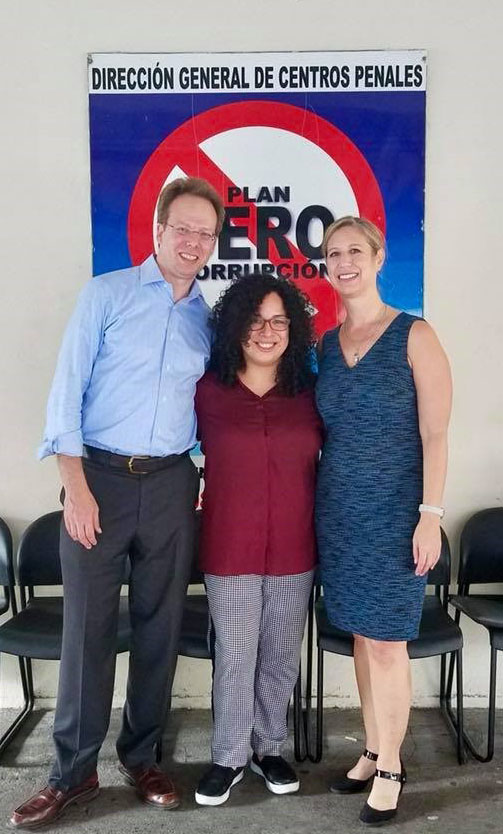
Next steps
Now that the grant has ended, as of February 2019, Dr. Mellow and Dr. Koetzle, along with co-PI and Senior International Officer in John Jay’s Office of International Studies and Programs Mayra Nieves and their program coordinator, PhD candidate and Salvadoran native Lidia Vásquez, are looking ahead. They are working on publishing their results with a Salvadoran university, in Spanish, and would like to see some of their recommendations translated to national policy. Their greatest hope, though, is to find continuing funding to keep doing the work to which they’ve dedicated so much time over the last two years, and perhaps even extend its scope to other nations in Central and South America with similar overcrowding and assessment challenges in their own criminal justice systems.
“We are hoping for the project to come back, “said Mellow. “That is our goal.”
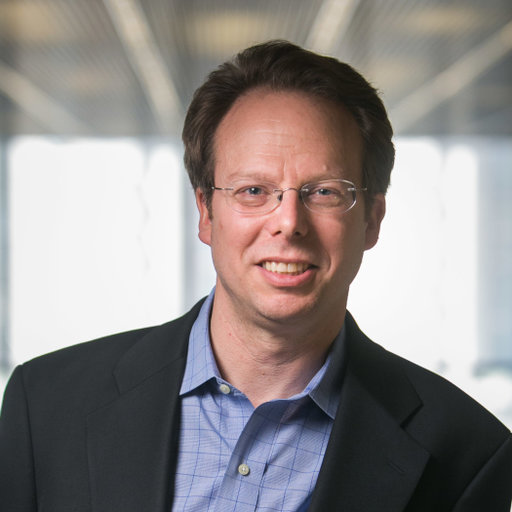 Dr. Jeff Mellow is a Professor in John Jay College’s Criminal Justice Department, Director of the Criminal Justice MA Program, and a member of the doctoral faculty at the CUNY Grad Center. His research focuses on correctional policy and practice, program evaluation, reentry, and critical incident analysis in corrections.
Dr. Jeff Mellow is a Professor in John Jay College’s Criminal Justice Department, Director of the Criminal Justice MA Program, and a member of the doctoral faculty at the CUNY Grad Center. His research focuses on correctional policy and practice, program evaluation, reentry, and critical incident analysis in corrections.
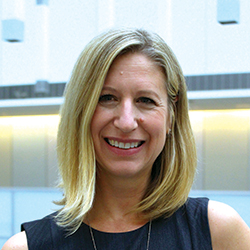 Dr. Deborah Koetzle is an Associate Professor in the Department of Public Management at John Jay College and the Executive Officer of the Doctoral Program in Criminal Justice. Her research interests center around effective interventions for offenders, problem-solving courts, risk/need assessment, and cross-cultural comparisons of prison-based treatments.
Dr. Deborah Koetzle is an Associate Professor in the Department of Public Management at John Jay College and the Executive Officer of the Doctoral Program in Criminal Justice. Her research interests center around effective interventions for offenders, problem-solving courts, risk/need assessment, and cross-cultural comparisons of prison-based treatments.
Maria J. D’Agostino — Negotiating Bias in the Workplace
If gender inequity is baked into today’s workplace, what can John Jay students and other Master in Public Administration (MPA) candidates do to fix the problem? Dr. Maria D’Agostino, with co-authors Helisse Levine (LIU-Brooklyn) and Meghna Sabharwal (UT-Dallas), published an article in the Journal of Public Affairs Education in March that represents the first step toward answering that question.
Dr. D’Agostino, an Associate Professor in the Department of Public Management, has focused her recent research on women in public administration. Not only are women — along with other persons whose gender presentation isn’t traditionally male — underrepresented in leadership and management roles but, according to the theory of Second Generation Gender Bias, the workplace isn’t even built to accommodate the needs of anyone but men.
Longstanding cultural beliefs and biases, formed over many decades, put up invisible barriers to women’s advancement, and workplace structures and practices can inadvertently favor men. One such practice is negotiation, which figures prominently in 21st century workplaces. When negotiating for starting salaries and other benefits, studies show that men see better negotiation outcomes than women, and that these differences are more due to stereotyping and structural bias than to behavioral differences. Negotiated Order theory, which has also heavily influenced D’Agostino’s work, suggests that the results of biased negotiations build up over time, meaning that when women or people of marginalized genders start out behind, they usually stay behind.D’Agostino believes that MPA programs are a great place to take on these challenges. “A lot of experimentation goes on in the public sector,” she said, giving examples of vital pieces of legislation that have trickled down from government policy to private sector workplaces, including Title IX, Paid Family Leave, and New York City’s 2017 law barring employers from asking about applicants’ salary history.
According to D’Agostino, MPA graduates are often perfectly placed to address inequality. “[Graduates] work in city, state, and federal government, they work in nonprofits, and in the private sector. The essence of public administration is serving the public and the common good, and they are the face of that; they are the decision-makers in terms of creating policy that becomes city, state, and federal law, which can even spread to the private sector. They are both creating and implementing policy, so they have a big impact on the future.”
It is therefore a concern for D’Agostino and her colleagues that more MPA programs aren’t tackling issues of workplace inequality head on. In her study, researchers surveyed MPA administrators to find out how many programs around the country offer courses in negotiation, let alone courses that incorporate elements of gender bias into coursework. They found that “none of the programs offered a standalone course on gendered negotiation, and those that offered courses on negotiation generally only focused on transactional portions,” said D’Agostino.
Her suggestion? Incorporate second generation gender bias into curricula as a core competency for all MPA programs. Raising awareness among students in the field could lead to big changes inside workplaces, but also in the ivory tower. “Academics could do more research, which could inform practice, which would affect training, which would impact the field in terms of gender equity.”
These are big dreams for sweeping change in MPA programs and in offices across the U.S. For now, D’Agostino and her colleagues are developing a conceptual framework for talking about the issue. Her next step is to interview both men and women in various positions in seven states, to try to understand the implications of second generation gender bias as they play out in real workplaces and to hear about real workers’ experience with bias.
You can find the full article, “Gender in negotiation: Preparing public administrators for the 21st century workplace,” online at the Journal for Public Affairs Education’s website.
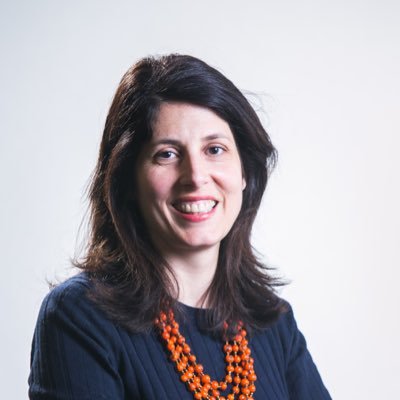 Maria D’Agostino is an Associate Professor in John Jay College’s Department of Public Management. She is also the co-founder of Women in the Public Sector at John Jay, a program which educates, engages, and fosters a consortium of students, faculty, public service practitioners, and community members interested in women in public service. It promotes gender equality and provides opportunities to address gender issues in public service.
Maria D’Agostino is an Associate Professor in John Jay College’s Department of Public Management. She is also the co-founder of Women in the Public Sector at John Jay, a program which educates, engages, and fosters a consortium of students, faculty, public service practitioners, and community members interested in women in public service. It promotes gender equality and provides opportunities to address gender issues in public service.
Dr. D’Agostino is the co-recipient, with WPS co-founder Dr. Nicole Elias, of the 2018-19 Inaugural Presidential Student-Faculty Research Collaboration Award from John Jay’s Office of Student Research and Creativity, for the examination of gender equity in municipalities. Her recent research has focused on women in public administration, including a 2018 co-edited book, Governing in a Global World: Women in Public Service.
Dr. Phillip Atiba Goff – Data Science for Justice
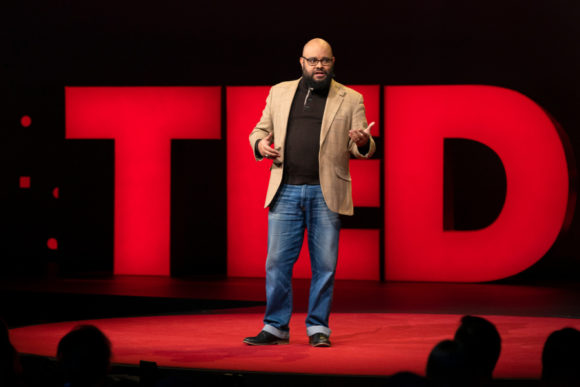
On April 16, 2019, John Jay College’s Franklin A. Thomas Professor in Policing Equity Dr. Phillip Atiba Goff spoke at Session 4 of TED2019 in Vancouver. The program featured eight speakers representing eight projects that are receiving funding from The Audacious Project in 2019. Dr. Goff spoke on behalf of his independent non-profit organization, the Center for Policing Equity (CPE), which was one of this year’s Audacious Projects.
CPE focuses on addressing racism in the United States. According to Dr. Goff, “When we change the definition of racism from attitudes to behaviors, we transform that problem from impossible to solvable.” CPE’s project, COMPSTAT for Justice, is a database leveraging data collected from police departments and cities on police behavior in an effort to identify problem areas where specific police behaviors can change.
With the support of The Audacious Project, CPE wants to extend the results it’s already seen with partners adopting COMPSTAT for Justice, by delivering the project to police departments serving 100 million people across the United States over the next five years.
To hear Dr. Goff’s TED Talk, visit the @TEDTalks Twitter page, where the link to the livestream is still up. You can read more about Session 4 of TED2019 on the TEDBlog.



Recent Comments